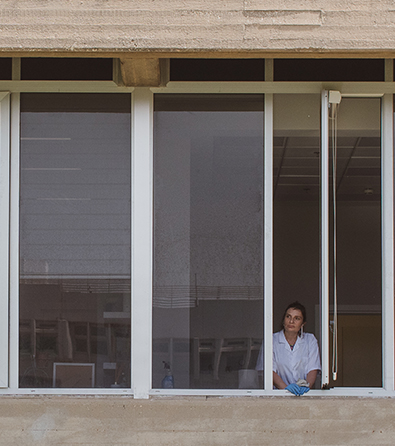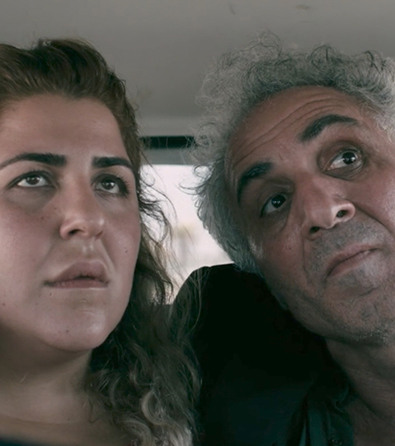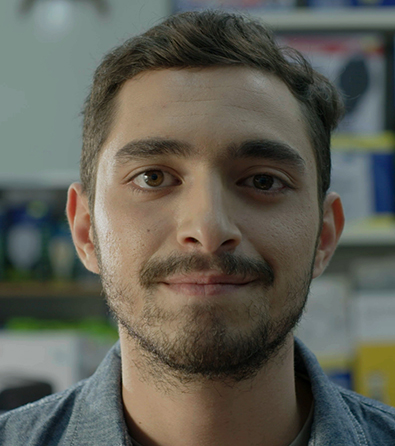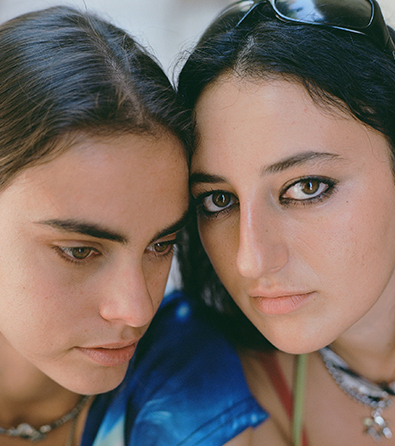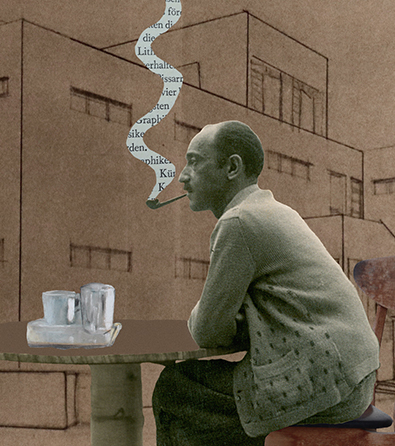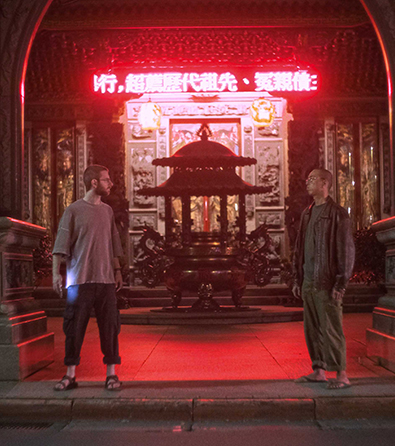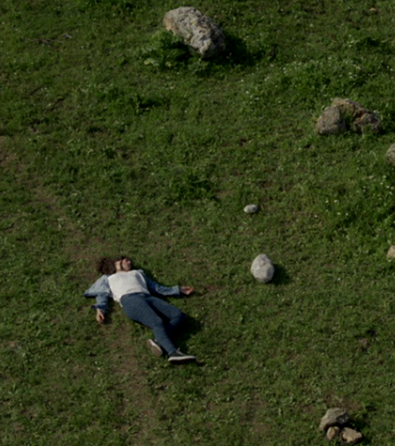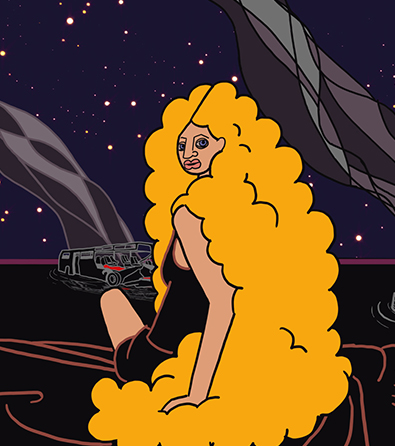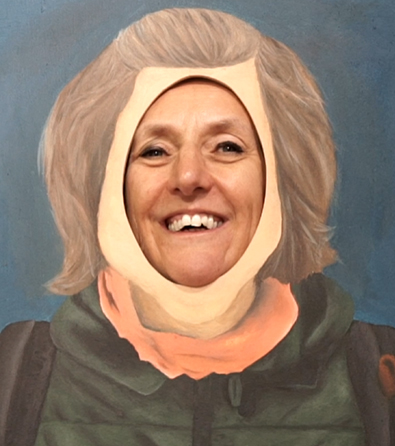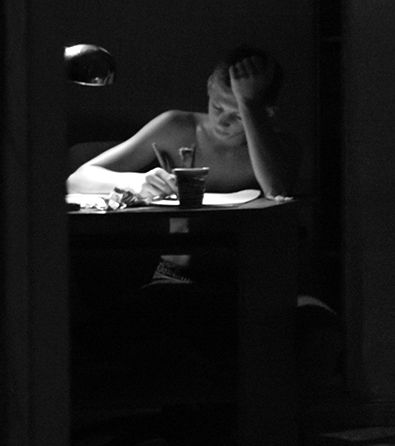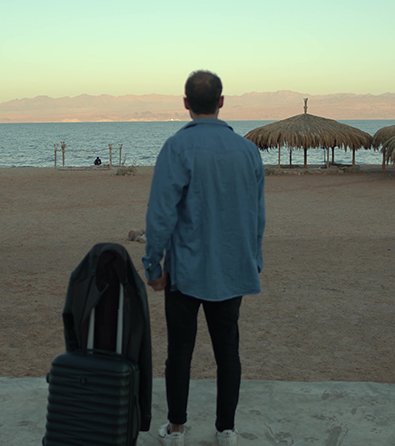The short film The Key Between Us (11 minutes) is available at the top of the page.
* To watch this film, please approve YouTube/Vimeo cookies via the blue cookie icon at the bottom left of the screen.
The film The Key Between Us by Chani Eisenstein begins with a black screen explaining that a Yichud room is a seclusion chamber entered by the bride and groom immediately after the wedding ceremony. It is the first moment of physical intimacy between them, following a life lived under strict gender separation.
The film itself opens with a simple gesture: a door handle turns as the bride and groom step into the Yichud room moments after their wedding ceremony. Remarkably, the film manages to create a fully formed narrative realm in just eleven minutes, placing the profound significance of the Yichud room at its core, without ever showing the room itself. There is no establishing shot, no long shot to orient us in the space. Yet through bold directorial choices and a confident hand, the filmmaker makes us feel almost present inside. To such an extent, in fact, that we can nearly sense the walls closing in alongside the emotional journey of the characters.
Agam Rudberg takes the lead role of Michal, opposite Uri Bluefarb as her new husband, David. They portray an ultra-Orthodox couple entering the Yichud room, overwhelmed with excitement at the long-awaited union. Yet when the moment arrives, Michal feels distress and recoils from the intimate touch David attempts to initiate. Over the course of the film, the couple faces a difficult emotional struggle in which David must step outside the religious environment he grew up in to understand her. The first shot in which we see him lingers for several long moments on his face, without cutting to Michal, and it is heartbreaking to witness his genuine excitement as he realizes that from this moment, he can finally call her his wife.
At the same time, as viewers witness Michal’s turmoil, conveyed with extraordinary authenticity by Rudberg, together with the words that appeared at the beginning of the film defining the setup of the Yichud room, they are unlikely to anticipate the ending that ultimately unfolds. Here lies my deep admiration for the director, who succeeds in bringing to the screen a new perspective on a familiar story often depicted across artistic mediums and particularly in Israeli cinema. A story that is usually represented as negative, traumatic, and even oppressive. Here, however, through meticulous cinematic expression and strict adherence to the synchronic time frame of the unfolding events, the film manages to conclude with a rare moment of humanity, imbued with compassion and tenderness.
Beyond its cinematic impact, it is essential to consider the cultural context in which the film was created. The Key Between Us was produced as part of A-Kitser 2022, a professional film incubator for women filmmakers from the ultra-Orthodox community initiated by the New Fund for Cinema and Television (NFCT). This background adds a layer of authenticity to the work. Eisenstein emerges from the very world she portrays, and from this position she succeeds in shedding light on it with a perspective that is at once critical and delicate. Within the developing field of ultra-Orthodox cinema in Israel, the film stands as a breakthrough. It does more than tell a personal story; it broadens the possibilities for how intimate experiences can be represented in a cinematic field still in formation.
Eisenstein keeps the camera close to her characters, almost refusing to grant either of them the role of main protagonist. She is unafraid to linger, allowing shots to rest for long stretches on the faces of each character, sustained by minimal dialogue. This choice alone is a remarkable achievement, as it produces a sense of authenticity that could only be reached through highly attentive and meticulously precise direction of her actors.
The editing reveals a keen sensitivity to the smallest moments, unfolding with a rhythm that feels organic and alive. Although the full space is never shown visually, we are still able to sense it and find our bearings through the film’s careful adherence to the characters’ emotional thread. The editing balances attention between the two figures with striking equality, refusing to designate either as the sole protagonist. In this sense, the true protagonist becomes the relationship itself, born in that room at the moment David overcomes his desire, releases himself from the conventions dictating what is expected to happen, and chooses instead to grant Michal the freedom she longs for.
By the time the film ends, we do not know where this couple’s journey will lead. The director chooses not to reveal whether Michal and David remain together or part ways at this point. Eisenstein leaves us with open questions that continue to reverberate long after the credits have rolled. As the film ended and the credits began to roll, I felt certain of only one thing: that for a single moment, two people whose worlds had felt almost unbridgeable just eleven minutes earlier managed, genuinely and wholeheartedly, to see one another.
